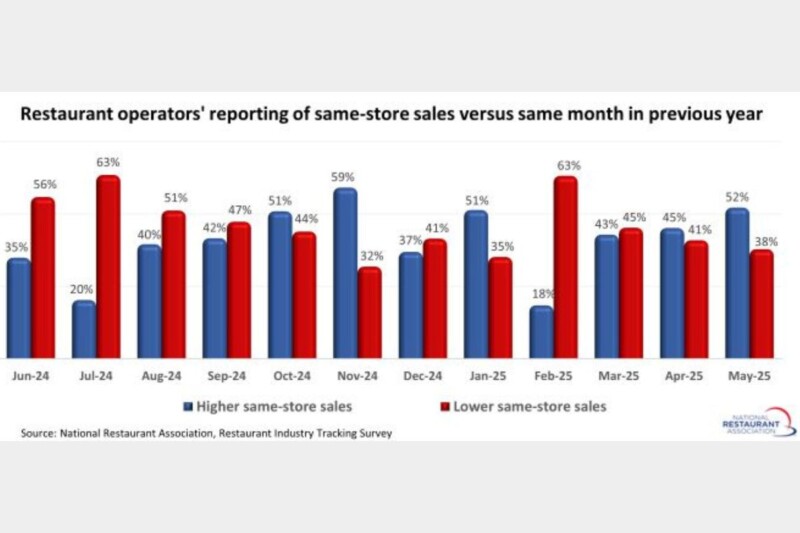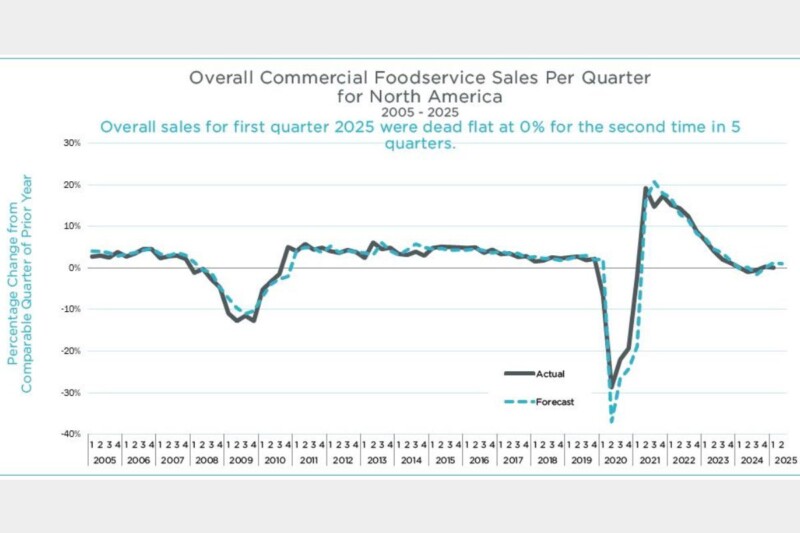Maine, Alaska Expected to See Largest Job Growth Rates This Summer
Nationally, eating and drinking establishments are projected to add 27,000 more seasonal jobs than in 2019 (the last time such data was recorded).

Any restaurant industry statistic that is at its strongest since 2017 is a bright spot, and this summer’s seasonal labor projection is no exception.
The National Restaurant Association’s 25th annual Eating and Drinking Place Summer Employment Forecast is offering an optimistic forecast, predicting that restaurants will add 502,000 seasonal jobs this summer. In 2017, eating and drinking places added 530,000 summer jobs between June and August. In 2019 (the last time the metric was provided due to the atypical hiring seasons in 2020-2022), 475,000 seasonal jobs were added, according to data from the Bureau of Labor Statistics.
In particular, the association’s press release details that “teenagers and young adults—the age cohorts most likely to work seasonal jobs —are returning to the labor force in numbers not seen in years.”
“The recent upward trend of teens in the workforce is a positive sign for restaurants, as this cohort makes up 21% of the industry workforce,” the association adds. “Overall, restaurants are the economy’s largest employer of teenagers, providing job opportunities for 1.9 million 16-19 year olds—or 34% of all working teens.”
The largest proportional employment increase of the 2023 summer season is anticipated in Maine, where an addition of 11,400 summer jobs would drive a 31% increase over Maine’s March 2023 eating and drinking place employment numbers (36,700 jobs). After Maine, the largest increases are expected in Alaska (20%, with 4,200 summer jobs), Rhode Island (17%, 6,800 summer jobs), Delaware (17%, 6,200 summer jobs), New Hampshire (12%, with 6,100 summer jobs), New Jersey (12%, with 30,800 summer jobs) and Massachusetts (11%, with 27,000 summer jobs).
New York is expected to add the most jobs this summer (45,000), followed by California (39,500) and Texas (36,500).
Florida and Arizona, with lower summer tourism rates than other states, are expected to see employment declines (Florida by 8,700 jobs and Arizona by 2,500 jobs). For the full state-by-state breakdown, click here.
The summer projections follow a slower hiring pace in April, when restaurants added added a net 24,800 jobs in April on a seasonally-adjusted basis, according to preliminary data from the BLS. As of April, eating and drinking places were 87,000 jobs (or 0.7%) below a February 2020 employment peak, the National Restaurant Association reported in early May.
RELATED CONTENT
- Advertisement -
- Advertisement -
- Advertisement -
TRENDING NOW
- Advertisement -
- Advertisement -
- Advertisement -


